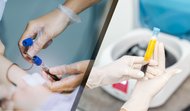Unveiling PRP: The Science Behind Its Surge in Popularity
What is PRP and why has it become more and more popular?
Platelet-rich plasma (PRP) is a treatment derived from blood that contains an elevated concentration of platelets, which are responsible for clotting and releasing growth factors essential for healing. By spinning a blood sample in a centrifuge, clinicians are able to isolate and concentrate the platelets within the plasma, creating a powerful regenerative therapy that can stimulate cell reproduction and tissue repair in targeted areas.
This treatment is popular among dermatology and plastic surgery procedures because of its ability to promote tissue repair, stimulate collagen production, and enhance skin rejuvenation. It is considered a natural and safe treatment option that can improve the overall texture and appearance of the skin, as well as aid in the healing process after certain procedures like microneedling or laser treatments. Additionally, PRP is known for its minimal downtime and low risk of adverse reactions, making it a preferred choice for those seeking non-invasive yet effective cosmetic enhancements.
Platelet-rich plasma (PRP) treatment is also often employed by dentists during procedures such as tooth extractions, implant placements, and periodontal surgeries. By harnessing the concentrated platelets, growth factors, and cytokines found in PRP, dentists can enhance wound healing, reduce inflammation, and improve overall treatment outcomes for their patients.
Additionally, PRP injections have shown promising results in addressing various musculoskeletal injuries and conditions. For instance, chronic tendon injuries like tennis elbow or jumper’s knee, which typically have prolonged healing times, may benefit from the addition of PRP shots to the treatment plan. These injections can aid in promoting the healing process, reducing pain, and potentially expediting the return to regular activities.
According to Johns Hopkins Medicine (www.hopkinsmedicine.org), the mechanism behind PRP injections is not completely understood. Studies show that the increased concentration of growth factors in platelet-rich plasma may stimulate or speed up the healing process, shortening healing time for injuries, decreasing pain and even encouraging hair growth.1
Who provides PRP treatments?
PRP (Platelet-Rich Plasma) treatments are typically provided by dental and medical professionals such as oral surgeons, periodontists, dermatologists, plastic surgeons, orthopedic surgeons, sports medicine specialists, and certain general practitioners who have received specialized training in PRP therapy. It is essential to seek treatment from a qualified healthcare provider with experience in administering PRP injections to ensure safety and efficacy.
What supplies are commonly used for PRP treatments?
Medical supplies needed for PRP (Platelet-Rich Plasma) treatments generally include a blood collection kit (containing syringes, needles, and tubes), a centrifuge machine to separate the platelets from the blood, PRP activation equipment, and sterile preparation trays for aseptic technique. Additionally, items such as ultrasound machines, sterile drapes, and local anesthesia may also be required depending on the specific treatment protocol.
Reference Link:
- https://www.hopkinsmedicine.org/health/treatment-tests-and-therapies/plateletrich-plasma-prp-treatment#:~:text=The%20mechanism%20behind%20PRP%20injections,and%20even%20encouraging%20hair%20growth.

